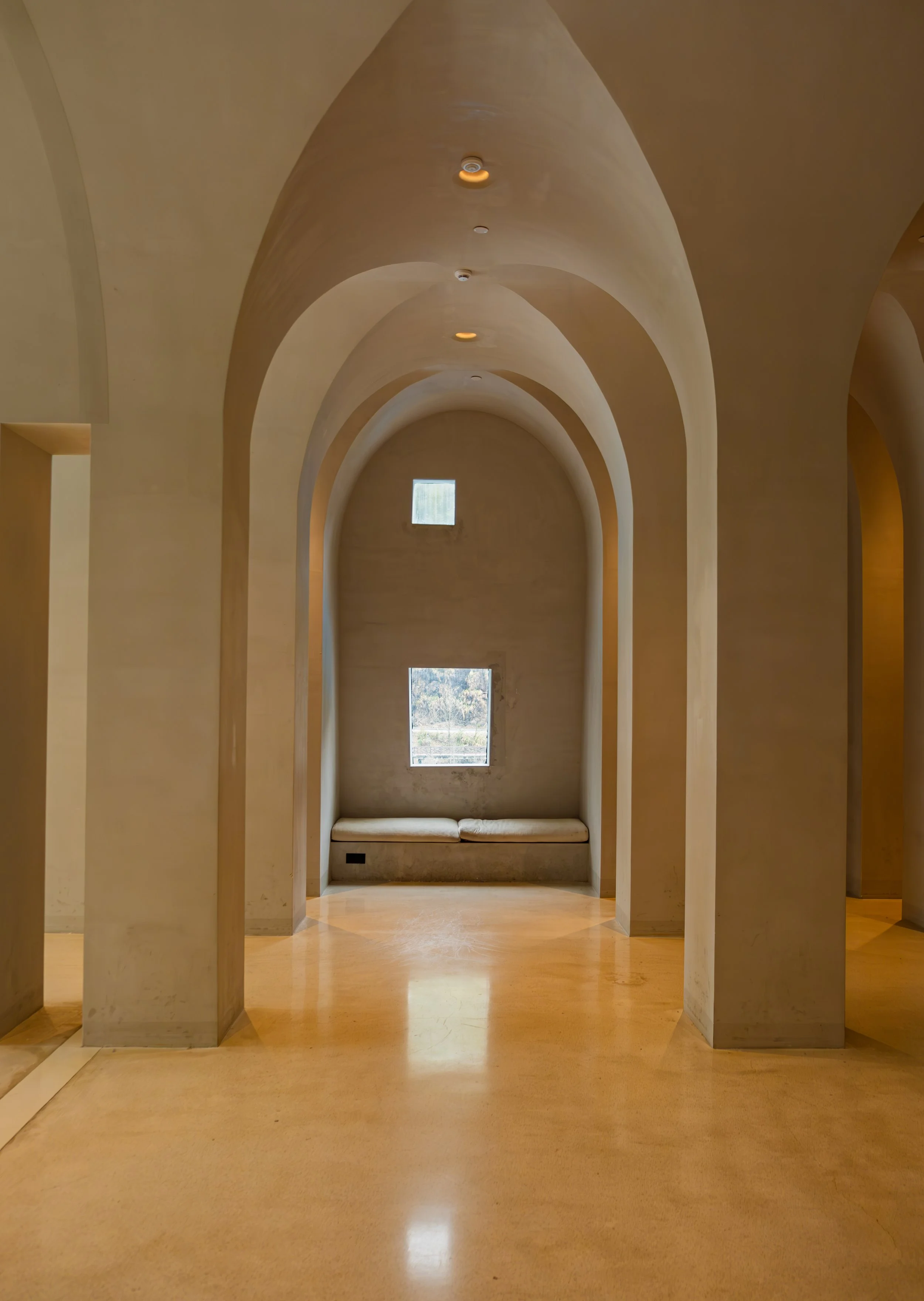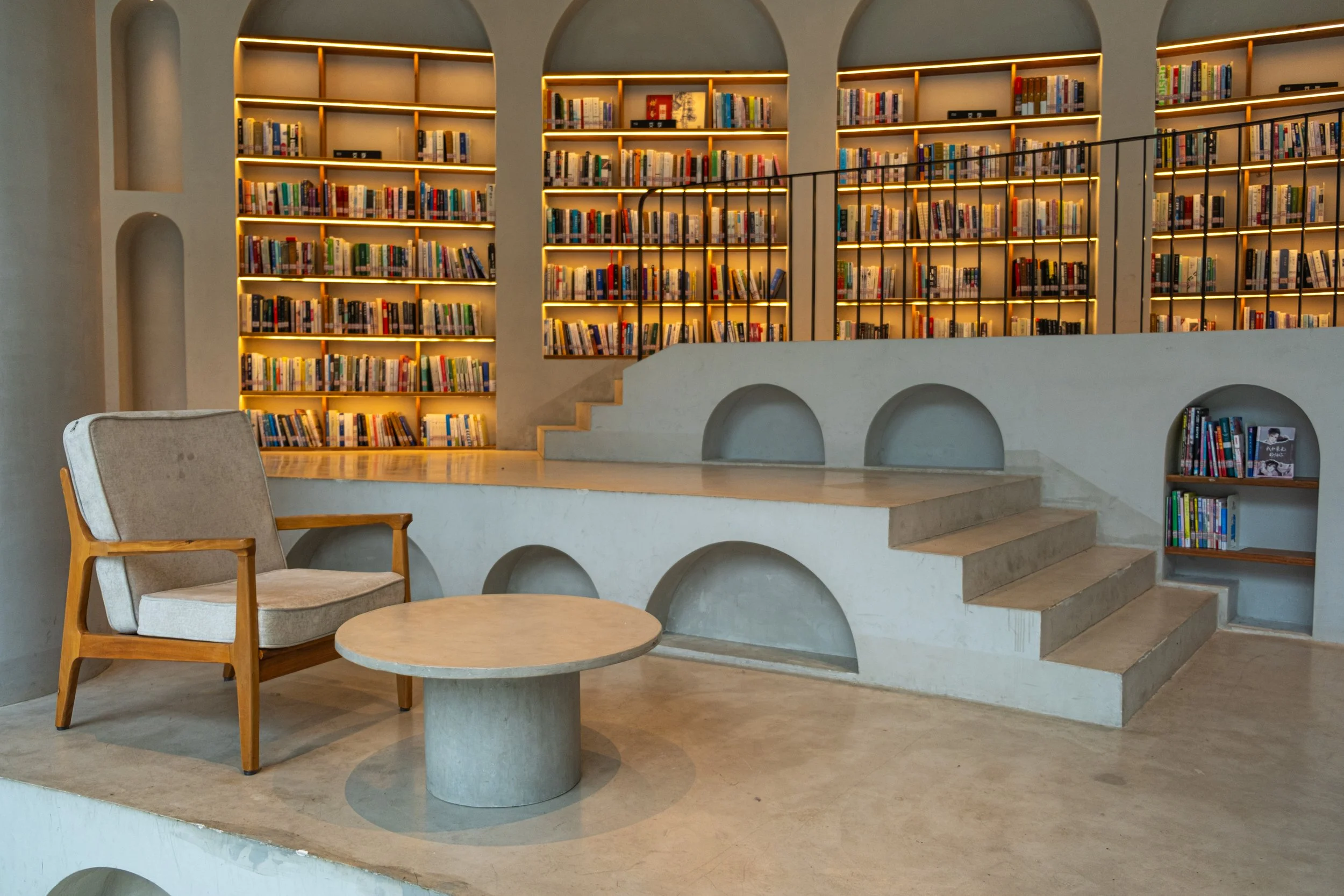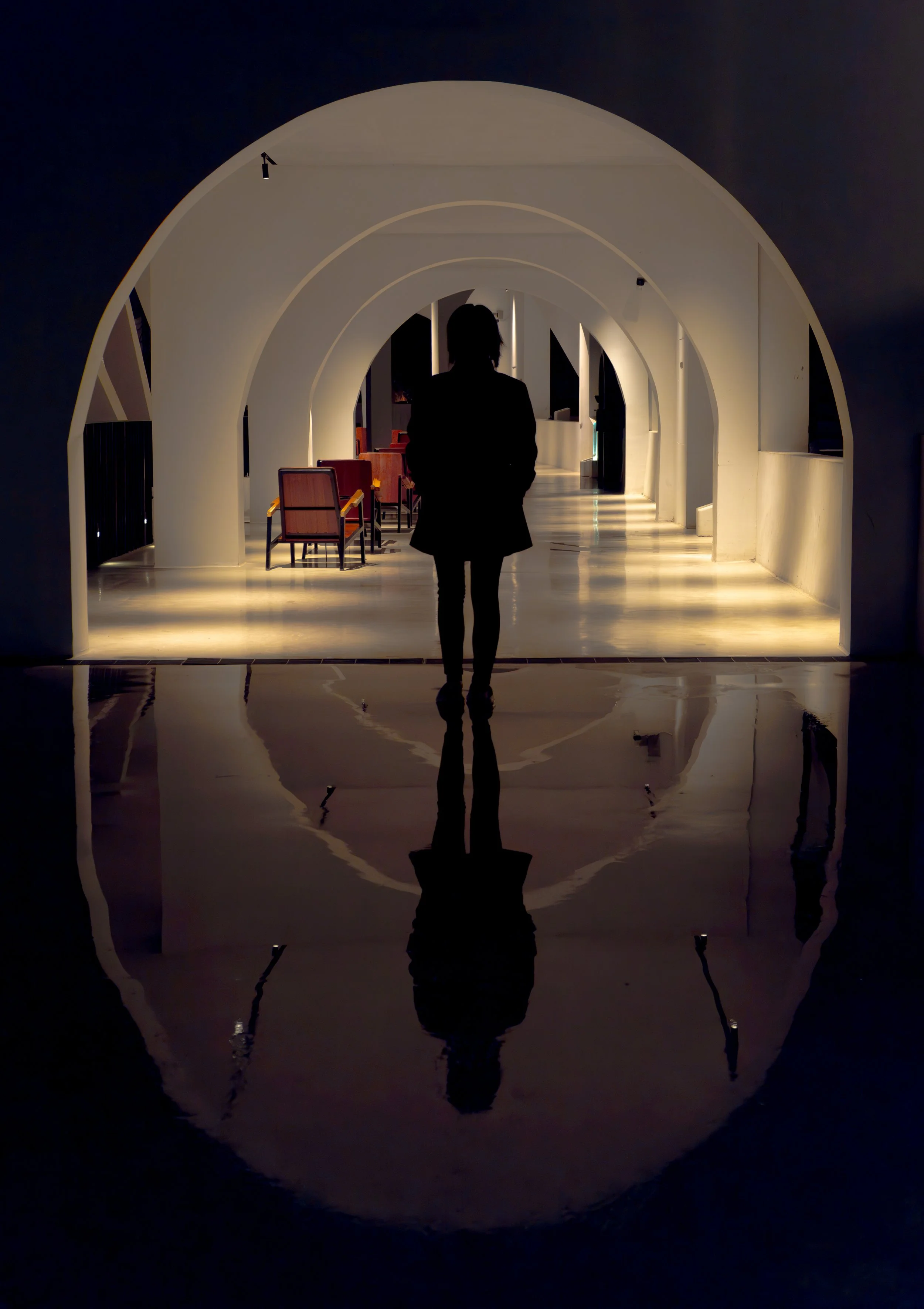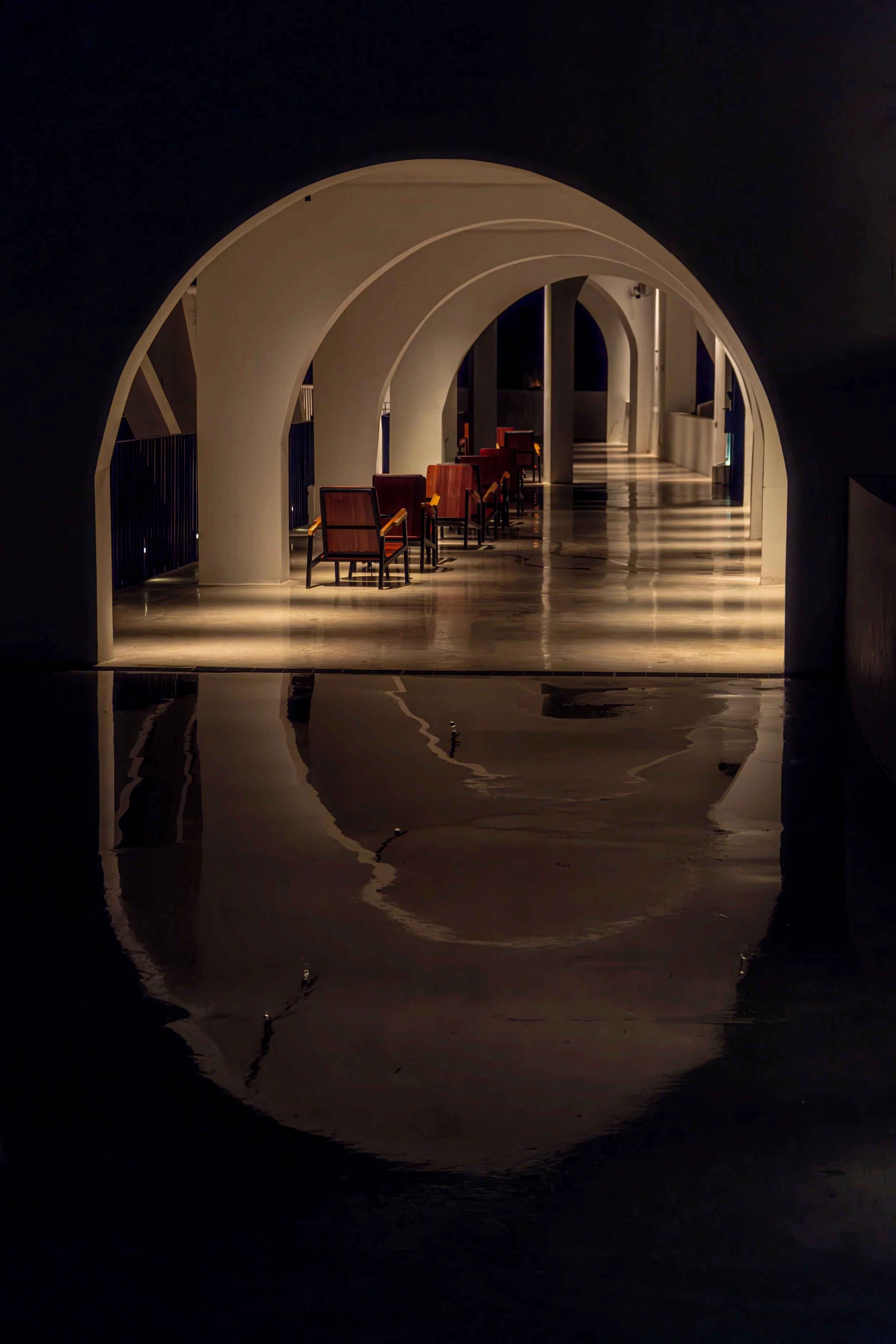One of the many fog-enwreathed mountains you can encounter in and around the beautiful city of Jingning in Zhejiang province.
Hidden in the Mists
A late, unexpected job offer leads the author on a remarkable photographic journey through a beautiful and relatively obscure city set deep in the mountains of Zhejiang province.
By Bradley K. Quigley
Photographs by Bradley K. Quigley
March 4th, 2024
Some opportunities in life come about by way of meticulous planning, while others can appear to come about by mere happenstance. A third category of opportunities — a marriage of the two, so to speak — can be brought about, however, as a result of the connections we forge with others.
It was the tail end of a wet Friday afternoon in late February when I received a text message asking if I’d be interested in a commercial acting job. The pay on offer was below market, or at least the market value I had so far fetched through the two acting jobs I’d been previously engaged. While the job held out little with regard to monetary remuneration, it did offer an all-expenses paid excursion out of the city. So with my weekend schedule as full as the lint lining my pockets, whatever minor hand-wringing I had was more than overruled by the prospect of actual work, especially bundled together as it was with the promise of a short stint of vaca. Having completed our negotiations, I booked train tickets for the following day, packed and made ready for bed. Having been mired for the last few weeks in the amber drowse of winter, I was excited by the prospect of getting outside the megacity orbit of Shanghai and exploring the unknown. Chance never seems to smile as warmly as when it is most needed.
Taking place during this year’s Lantern Festival, the video was meant to celebrate the Jingning She autonomous county government’s 40th anniversary. Designated by the Constitution of the People’s Republic, the country abounds in such autonomous administrative areas, the intended purpose of which, ostensibly, is to have the local government arranged such that it can better serve the dominant minority group found in each of these many different regions. As one of the fifty-six nationally recognized ethnic groups of China, the She people constitute the largest single ethnic minority group in the provinces of Fujian, Jiangxi, and Zhejiang.
Depictions of the phoenix can be found in a variety of different forms throughout the city, serving as both a mythological narrative of the She (畲族) people’s strength and tenacity, and as a visual metaphor for the region’s rising economic prosperity.
Arriving the following afternoon at Hongqiao Railway Station, for our first leg of the trip we boarded a bullet train heading to the city of Lishui (丽水-beautiful waters). After a little over four hours, we got out of the train station, grabbed a delicious bite to eat from one of the local street stands and hopped into the waiting taxi that had been ordered to take us directly into the city of Jingning.
With mountains as liable as anything in life to fill me with a sense of untamed wonder, like a delighted child for much of the journey, I had my face firmly planted to the glass of my passenger seat window staring rapturously up as the tall mountains crowding both sides of the road fled past. Like an enchanted wintery veil, their peaks were all uniformly wreathed in mist; their tree-tops sugar-coated in frost.
Arriving in the city about fifty minutes later, we checked into our hotel room and hitched a ride with some of the video crew over to the ancient town that lay just a few kilometers down from our hotel.
Ancient Town
Modern townhouses built atop the surrounding mountains overlook the center of Jingning’s Ancient Town, seen here.
Set beside the steep embankments of a wide river and beneath the handsome peaks of the surrounding mountains, the ancient town is a sight to behold. Spread out over a fairly large area, the town is host to a multitude of beautifully ornate and lovingly restored structures. As I moved my way down its flagstone streets and cobbled lanes, I felt as if I had been transported to a bygone era of the region’s illustrious past. Despite its beautiful trappings, however, its streets were largely devoid of life. The doors of its opera house, tessellated towers, and the vast majority of its shops, storefronts and residences were all firmly closed and barred to the outside world. Aside from the occasional mound of swept together dust and debris, upon closer inspection, a look through their windows revealed nothing but the dark, pooled shadows of their empty interiors.
Despite being zoned to include both businesses and residential housing, much of the properties in Ancient Town stood vacant or were in the process of being renovated.
The town appeared to be haunted by the ghosts of monied expectation, a condition it shared with any number of other ancient towns you can visit throughout China — places in which a similar vanity restoration or renovation project has recently been undergone, one that has sought to put an idyllic shine on these properties in the hopes of resurrecting the spirit of a given place. Stunningly beautiful as the results of these projects often end up being, absent any clear indications of their having resulted in an increase in local tourism and sustainable economic growth, these local infrastructural undertakings often offer these regions little more than the band-aid of short-term economic stimulus. However, as any touristy town is subject to seasonal dips in traffic, I may perhaps be a bit overhasty in this negative assessment — the heavy, low-hanging grey clouds and the chill wetness of the surroundings being a clear testament to the relative inclemency of the region during this time of year.
Surrounding by jade green waters, this beautifully ornate dragon tea house stood empty of patrons.
Here, a beautiful array of koi fish can be seen skirmishing over the food tossed to them by patrons of a fish food stall located nearby.
Lantern Festival,
Year of the Dragon
The second of the two Lantern Festival Dragons can be seen here chasing after the ever elusive lantern amidst a crowd of onlookers.
As we excitedly waited for the festivities to begin we saw many camera drones scouting out the terrain as they circled about in the skies above. In the tall apartment buildings adjacent to the road, a large number of people could be seen leaning over the rails of their balcony, the shimmering electric lights of their hung lanterns casting a lurid red glare over their bent forms.
With the deep thud of a wide drum, the first wave of the parade finally arrived as dragon-costume dancers began circling the wide expanse of the open road. As the costume dancers gave way, an enormous dragon head could be seen making its way slowly down the wide-open stage of the street. Artfully constructed and brightly lit up by a multitude of variegated lights, it slowly ebbed along the embankments of the thickly bunched crowds. Constantly dipping and lifting its ponderously large head, its handlers struggled mightily at the reins as they worked to affect the illusion of its swimming amidst the wide-open channel of the street.
But perhaps even more enthralling than the dragon head itself, though, was the interminable train of lanterns that were directly connected to it. Divided equally into flexible individual segments, each section consisted of a four foot long wooden board, atop of which was affixed three, evenly spaced, decorative flame-lit lanterns. The entire weight of these individual segments was alone being shouldered by a single person. Each of these individual boards was in turn fixed directly to the one in front of it as well as to the one that lay behind by way of its two peg-holes. Lying at opposite ends of the board, into these two peg-holes had been driven a wooden connecting rod. Acting as a point of flexible rotation, these rods served as both a steering handgrip and a stable platform that could be brought to rest upon the ground — granting those whose job it was to carry each of these individual segments the occasional chance to relieve their wearied shoulders. At the end of this unending train of lanterns, boards and straining bodies, lied the dragon’s tail, a colorful compliment to its emblazoned head.
As the dragon made its way around its passes, the windings of its extensive form began to coil back around on itself — the chain of groaning bodies circling past one another in a convoluted and ever-tightening bunch of flamed lanterns and frighteningly lurching boards. An impressive and awe-inspiring feat of collective energies, the serpentine twinnings of its body would go on to spool and unspool its vast length several more times before moving on down the road towards its next and final destination in the night’s circuit.
With a light, steady rain just beginning to fall, we started walking our way back to our hotel in haste. Having to push our way through the throngs of assembled onlookers, we were forced to slosh our way through muddy, well-trammeled puddles as we dodged in and out of the thick crowds and weaved our way around the swarms of open umbrellas before finally reaching our hotel, where we quickly bedded down for some well-needed rest.
Here, the centuries old pagoda that marks the center of Jingning can be seen emblazoned beneath the falling rain.
The City in the Sky-Nayun Hotel
悬崖上的天空之城 - 那云酒店
Beautifully designed and presented, the lobby greets guests with amazing views of the resort’s stunning surroundings.
The five-thirty alarm rang painfully early as I arose from bed and quickly showered. Making our way downstairs, the film crew was already busily stowing their gear away into the assembled vehicles. Our shoddy coffee order having just arrived, we packed ourselves into the waiting cars and took a quick, fifteen minute drive over to our first shooting location.
As we rounded a bend in the road, we were met with the immense gleaming facade one of the most impressive structures I’d ever laid eyes on in China. Beyond the divide of a wide river stood a vast complex of vertiginous buildings that clung tenaciously to the side of a large mountain. Almost luminescent in the blazing purity of their white exterior, the structures stood out sharply against the somber grey of the early morning skies and the verdant flora of the surrounding landscape.
A curious child holds onto a handrail as she looks curiously out into the distance amidst a backdrop of the resort’s vertiginous structures.
Parking our vehicles at the resort transit station, we checked in with the personnel there before throwing our equipment into the oversized buggies queued up for us outside. Hopping in ourselves, we were then driven across the river and along the restricted access road that lead up to the resort itself.
As we began to draw closer to the resort, the massive network of its many different structures and the sheer, looming verticality of its buildings grew increasingly more apparent. With its blazing white buildings stacked one atop the other, the complex in its entirety looked like a modernist reimagining of Middle-Earth’s Gondor.
The lobby gives guests their first taste of the resort’s magnificent union of architecture and interior design elements.
Still waiting on the arrival of the rest of the crew and set gear, we entered the lobby of the resort. Up a short flight of steps just beyond the entrance and narrow foyer of the lobby’s wide, open-plan room lay its sitting room. Handsomely and comfortably furnished, the sitting room contained ten or so white, leather upholstered sofas with richly stained walnut-slab coffee tables positioned between them. To the far left of the room lay a coffee bar nook with similarly upholstered arm-chairs positioned beside the large, curved picture windows overlooking the side grounds and wide river fronting the resort. Finally, to the right lay the guest check-in receiving desk.
Here, a bit of architectural wizardry sees the gracefully curving lines of the window niche wrap around to connect with the straight lines of the supporting pillar.
In what was to serve as the common, unifying theme throughout the mega-structure of the resort, its interior design — with the off-white, light grey coloring of its poured concrete flooring, ceiling and walls; with its straight, clean lines juxtaposed with gracefully curving arches and high cathedral ceilings — was at once both timelessly classical and decidedly modern. With its beautifully curated and carefully executed sense of architectural design, the marriage of these two divergent themes couldn’t have been more harmoniously achieved. With every nook and cranny of its buildings worthy of being featured in the world’s leading architectural magazines, it was undoubtedly one of the most unique and arresting properties I had ever encountered.
Dajun Village
大均乡
Filing their way down the cobbled path of the village, a gaze weighted with mystery takes center stage as each handmaiden turns their own unique regard upon the camera.
With its borders hemmed in and neatly defined by a broad, winding river and the imposing hedge of the surrounding mountains, the land possessed a sense of raw, elemental beauty to it. It was between these natural boundaries where the picturesque and idyllic village of Dajun (大均乡) lay nestled.
Lying just to the side of where we had parked stood an immensely large and timelessly wizened camphor tree. Supported by a concrete pylon that had been driven deep into the earth, true to its name, the leaning tree looked like an enormous outstretched hand reaching out to the green, gentle waters that flowed away in the embankment beneath it. Assembled at the foot of this tree, the lead actress, along with a file of young women, all arrayed in the colorful traditional costume and decorative silver headdresses and bangles of the She people, conducted an elegant, choreographed dance.
The Tang Camphor (唐樟) tree seen here stands as a monument to the beauty and resilience of nature. So named because of its having been planted over 1200 years ago during the Tang dynasty, it stands guard at the entrance to the village. Looking like a palm-out-facing left hand, the thick branches of its “fingers” reach out to the heavens above.
Calling for the reenactment of a traditional She marriage ceremony, the next scene would see the lead and myself act the part of the joyous couple. Attended by her coterie of colorful handmaidens, the lead, acting the part of the bride, was conducted through the streets of the village inside of a screened palanquin. Far less glamorous than being paraded about the village in a palanquin, I was instead tasked with completing various ceremonial and matrimonial challenges by which I was to win the admiration of my bride, or at least that of my fictitious in-laws.
Costumed in traditional She (畲族) clothing and accompanied by a coterie of wedding handmaidens, two men shoulder an empty palanquin between them.
Finishing up our shooting at the main portal entrance of the village, we moved down the main lane path until it dead-ended at a centuries — perhaps millennia — old temple, one that stood some fifty or so meters from the pebbled beach shore of the river that gently encompassed the village.
Spanning across an estuary located on the far side of the river that encompasses the village, an ancient bridge can be seen beneath mist-shrouded summits.
Flourishing like a meadow after a refreshing spring rain, the ancient tiled roof was lushly carpeted in verdant mats of moss and lime green lichen. As I drew closer to the temple, the building was deeply redolent of upturned earth, reminding me of those times when I would stumble as a child upon an uprooted tree that had fallen as a result of heavy rains or blustery weather. The haunt of boyhood imagination, I would look in wonder upon the dark caverns unearthed in the soft, moist soil by the tree’s tendril roots, envisaging them as magical doorways that led out unto unseen realms. I carried these thoughts in mind as I walked into the building and breathed in the heady scents of its age-old interiors.
A testament to the age of the temple building it has shielded for untold centuries, a carpet of thick moss and vibrant lichen can be seen here coating the structure’s roofing tiles.
Once inside, the building’s earthy scents quickly mingled with the ripe fruit smells of the votive offerings resting beside its arcade nestled statues and the gently drifting plumes of burning incense atop its altars — the bygone remnants of their needly sticks reduced to undisturbed ash piled high upon the stone flooring below. Imparting a sense of spiritual stillness and tranquility, the temple’s hallowed walls seemed almost displaced from time — unmolested by the mutable world that lay beyond.
Here, the ancestral figures of this ancient temple shrine can be seen behind the temple’s inner sanctum altar.
Moving around the temple interiors, I began snapping photos of the statues and observing the film crew and other people milling about in the hall. As if attuned to the spiritual timelessness of the temple itself, there was an old, smallish woman occupying a seat in front of the temple entrance, serving in the role, if I should hazard a guess, of its caretaker, so humble and charming in appearance did she seem.
Deeply lined in wrinkles, no doubt wizened by a life lived in hard labor as much as by the passage of time, the skin of her hands and face were tanned a rich brown. But despite these hard won tokens of wisdom and hardship, age did nothing to conceal her spry elfin features. Undoubtedly a beautiful woman when she was young, she nonetheless undoubtedly remained so still. Immediately enamored with her, I asked if it would be okay with her if I took her picture. Consenting to this after a bit of translation help, I thanked her profusely for granting me this kind favor. Her face brimmed with a sense of strength and tenacity while her wry, winsome smile radiated nothing but the kindness of her character. It was a delightful and memorable experience.
Wearing a wry, winsome smile, the temple caregiver can be seen here.
A Look at Jingning’s Manufacturing Industry
We filmed our next scene at a children’s educational toy manufacturing showroom. Host to an array of different practical educational toys, it had everything from shop tools to puzzles, to indoor playground sets, to interlocking building block sets. With myself acting the part of a prospective investor, I got to see a small slice of Jingning’s burgeoning industrial landscape while being given the freedom to act like a child at-heart amidst a treasure trove of interactive toys.
The She Historical Museum
畲族
For our final shooting location, we went to Jingning’s She Historical Museum, which showcased the She people’s historical and continued cultural significance to the region. Despite the language barrier, the museum’s easy to follow layout served to remove any bars to my greater understanding of the She people. Through its vibrant display of centuries-old artifacts, traditional and ceremonial clothing, distinctive ethnic customs, tools, and arts and crafts, I learned a lot about the rich history and cultural importance of the She people, and their contributions to the communal experience of the Chinese people.
The Return to the City in the Sky
Two lonely chairs sit before a backdrop of night-shrouded mountains.
Opting to stay in Jingning for some well-needed R&R following the exhausting shooting schedule of the previous day, through his connections with the City in the Sky, the director of the video offered to put us up for a night at the resort. Accepting this gracious gift of an offer, we packed our bags and grabbed a taxi, bundling ourselves in its warm interiors from the cold, sodden rain.
Built atop the foundations and original structures of what used to be a former silver mine, the resort offers guests some wildly unique amenities and experiences, with one especial example being the resort’s repurposing of its many honeycombed mine shafts, which now served as event spaces and guest suites.
At the far end of the resort, I came across one such tunnel that ran for some distance into the belly of the mountain. Comfortably warm and well-ventilated, the shaft’s main path terminated in a meditation room, placed in the middle of the floor was a hemp cord mat atop which sat a number of round kneeling pillows. Walking back, I came across an open door that led to one of the guest rooms. Despite being comfortably spacious, its interior was otherwise sparsely decorated and generally spartan in its overall color palette and furnishings. This sense of minimal design, however, was meant to ensure that the natural elements of the room’s distinctive surroundings always remained at the forefront of its visual and aesthetic appeal. Completely shut off from both the sights and sounds of the outside world, sleeping amidst such an environment undoubtedly would make for an incredibly unique and unforgettable experience.
Built on a former silver mine, the resort has repurposed many of its mine shafts for guest living facilities and activity centers.
Not for the faint of heart, the flooring of the resort’s skytower is composed of transparent reinforced glass tiles.
For those with the pluck to take their tea with two, healthy spoons of trepidation, the resort offers guests the thrilling (or perhaps closer to the truth — nauseating) experience of being suspended in space. Gained by way of a glass service elevator, the resort is home to a long glass lookout tower, atop of which lies an infinity pool, one where guests, in more seasonable weather, can take a dip while looking out over the wide expanse of the valley far below. With the hall measuring some 30 meters from end to end, that first step outside of the elevator doors and onto its large, transparent glass flooring calls for an act of courage.
With nothing more than reinforced glass shielding you from tumbling some eight floors or more down to almost certain death, taking a stroll across the breath of the hall can be vertigo inducing. For those with more candor and bravery than I, the hall also offers several side-rooms by which guests can take a meal or sit down for drinks. Boxed in clear glass, with both tables and chairs constructed of similarly transparent plexiglass, I can only imagine that drinking your afternoon tea amidst such an environment would make for one of the more memorable and invigorating instants of refreshment.
Down the access road that lay below the lookout tower, many of the resort’s dining halls and entertainment amenities can be found. Located just up the way from this thoroughfare was a narrow flight of descending stairs that gave out onto a large, open platform with views of the wide river below and the opposing mountains. At the opposite end of this platform were a series of staircases that followed the steep, descending slope of the mountain. With uniformly white surfaces and terrazzo flooring, these staircases led down to one of the resort’s many available events spaces as well as to an independent wing of guest rooms, each suite of which was outfitted with its own generous balcony and outside seating arrangements. Branching off from the main staircase was a dizzying array of secondary staircases that led up to the entry doors of its many private hotel room suites. Moving up and down these staircases, with their constantly shifting sense of direction and perspective, gave one the impression of wandering amidst the surrealistic landscape of an Escher drawing, or strolling amongst the whitewashed coastline buildings of Santorini, Greece.
With a wide open panoramic view of the surrounding countryside, a dizzying array of descending and ascending staircases grant alternative access to guest suites and activity centers.
The resort took on an almost surreal appearance as day gave unto a grey, muted dusk. With a steady drizzle having begun to fall some hours prior, the empty, chill corridors of the resort were filled with standing pools of water. Lending an almost dreamlike beauty and surreality to the surroundings, these standing pools of water reflected the broad, graceful arches of the resort’s myriad structures.
The resort’s main spa pool seen here offers guests a beautiful glass-topped rotunda by which to view the heavens. Along with this pool, the spa is also host to several other cold and hot pools, sauna rooms and even private spa pools available for guest use on the roof of the structure.
After spending a few hours snapping pictures, we finally grabbed an enjoyable dinner before heading out to the resort’s spa wing. Located some distance away from the resort’s main center, we arranged to be picked up by one of the resort’s staff members and driven over. Like every one of its many other structures, the spa was architecturally magnificent. The spa’s central and main steam pool was decadently beautiful. In the shape of a rotunda, the rim of the pool was lined with water-jet massage chairs. Rising up from the perimeter of the pool were large rounded support columns that terminated some distance up in a stunning domed glass ceiling. Given how great of an experience the spa was at night, I can only imagine how much even more incredible it must be to be able to soak in the bright of day with the sun beaming its rays down through the domed ceiling amidst a dense fog of rising steam.
After waking up the next morning, we enjoyed a bubble bath in our suite’s private outdoor tub while drinking our coffee and looking out over the expanse of surrounding mountains. After taking our lunch in the resort’s beautiful dining canteen, we returned to our room to pack our bags and reluctantly left its cozy confines for the long trip back home.
Arriving back home and looking back on all of the pictures I took in Jingning, I came to fully realize how special of a place it really was. While this overlooked gem is finally getting the touristy attention it well-deserves — receiving national backing by no less than President Xi himself — it is still one of those rare idyllic towns that doesn’t feel over-trafficked — making the experience of being there feel like a uniquely private adventure. With its raw, untamed beauty, its rich ethnic and cultural history, and its vast array of distinctive locations and guest amenities, pinned to my heart as it now is, Jingning is a city that should be on the radar of every destination junkie.






























